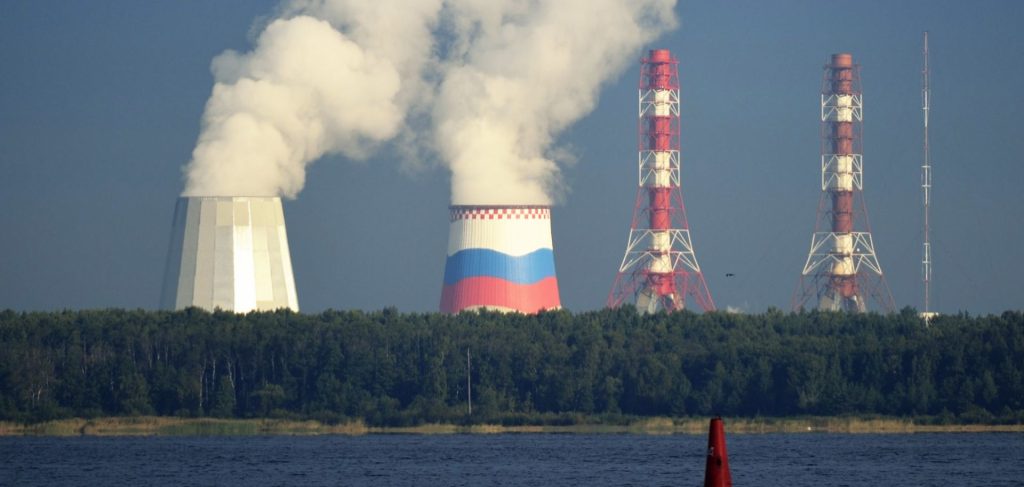Are you ready to delve into the fascinating history of Russian nuclear power plants? Join us on a journey through time as we explore the development, challenges, and achievements of nuclear energy in Russia. From the first commercial-scale plants in the 1960s to advancements in reactor technology, Russia has emerged as a major player in the industry. We’ll examine the government’s plans, projections, and future market dynamics, including the aim to significantly increase hydro-electric capacity and the potential for nuclear power to provide a substantial portion of Russia’s electricity by 2050.
Early Nuclear Power Development
During the early stages of nuclear power development in Russia, significant advancements were made in the construction and operation of nuclear power plants. The Soviet nuclear program, led by nuclear energy pioneers, aimed to harness the potential of nuclear energy for peaceful purposes. One of the key milestones in nuclear power history was the construction of the Obninsk reactor, which became the world’s first commercial-scale nuclear power plant in 1954. This marked a major breakthrough in the field of nuclear energy and laid the foundation for the development of future nuclear power reactors.
The Obninsk reactor, with its 5 MWe capacity, demonstrated the feasibility of generating electricity using nuclear fission. This success paved the way for the subsequent construction of larger-scale nuclear power plants in Russia. The early nuclear power reactors built during this period showcased the country’s commitment to advancing nuclear technology and exploring the potential of nuclear energy as a viable source of electricity generation.
The Soviet Union’s investment in nuclear power during these early years set the stage for further expansion and development in the field. The knowledge and experience gained from operating these early reactors formed the basis for future advancements in reactor design and safety. The lessons learned from the construction and operation of the Obninsk reactor and other early nuclear power plants played a crucial role in shaping the future of nuclear energy in Russia and beyond.
Expansion and Improvement After Chernobyl
After the Chernobyl accident, Russia embarked on a period of expansion and improvement in its nuclear power industry. This was driven by the need to address safety concerns, regain public trust, and enhance the overall performance of its nuclear power plants. The following key developments took place during this period:
- Expansion plans: Russia formulated ambitious expansion plans to increase its nuclear power capacity. This involved the construction of new reactors and the modernization of existing ones.
- Safety measures: The Chernobyl accident served as a wake-up call for Russia, prompting the implementation of stringent safety measures. These measures included enhanced reactor design, improved emergency response capabilities, and stricter regulatory oversight.
- Technological advancements: Russia made significant technological advancements in its nuclear power industry. This included the development of advanced reactor designs, such as the VVER-1200 and the BN-800, which offer improved safety features and higher efficiency.
- International collaborations: Russia actively engaged in international collaborations to exchange knowledge and expertise in nuclear power. This allowed for the adoption of best practices and the integration of global standards in its nuclear industry.
- Public perception: Recognizing the importance of public perception, Russia focused on improving transparency and communication regarding its nuclear power plants. Efforts were made to educate the public about the benefits and safety measures associated with nuclear energy.
Through these expansion and improvement efforts, Russia has been able to enhance the safety, efficiency, and public acceptance of its nuclear power industry. This has positioned the country as a leader in nuclear energy and paved the way for future advancements in the field.
Revival and New Reactors in the 2000s
In the 2000s, Russia witnessed the construction and commissioning of several new reactors, marking a significant revival in its nuclear power industry. This period saw a renewed focus on modernization efforts, construction projects, operational improvements, and technological advancements. The revival of reactors played a crucial role in meeting the increasing energy demands of the country and reducing its dependence on fossil fuels.
One of the notable projects during this time was the construction of the Beloyarsk 4 BN-800 reactor, which entered commercial operation after facing construction delays. This reactor, utilizing advanced technology, showcased Russia’s commitment to developing and implementing innovative nuclear power solutions. Additionally, major upgrades and lifetime extensions were carried out on existing reactors, such as Balakovo 1 and Beloyarsk 3 BN-600, further enhancing their operational capabilities and extending their lifespans.
The revival of the nuclear power industry in Russia also led to significant advancements in operational performance. Through the implementation of modern technologies and improved operational practices, capacity factors of nuclear power plants increased, ensuring a more reliable and efficient electricity generation process.
Furthermore, these developments highlighted Russia’s commitment to maintaining a strong foothold in the global nuclear power market. By successfully completing construction projects and demonstrating operational excellence, Russia solidified its position as a leader in the field of nuclear energy.
Lifetime Extensions and Capacity Factors
Extend the lifespan and boost efficiency of Russian nuclear power plants through license extensions and increased capacity factors. Here are some key points to consider regarding the lifetime extensions and capacity factors of Russian nuclear power plants:
- License extensions: Most reactors in Russia have been licensed for lifetime extension, ensuring their continued operation beyond their original design lifespan. License extensions have been issued for 29 units, totaling 21 GWe of generating capacity. The VVER-440 units generally have 15-year operating lifetime extensions, while the VVER-1000 units are expected to have 30-year operating license extensions.
- Operational performance: Capacity factors, which measure the actual output of a power plant compared to its maximum potential output, have been a key indicator of operational performance in Russian nuclear power plants. In 2010, 2011, and 2014, capacity factors were above 81%. The Balakovo plant stood out as the best-performing plant in 2011 and 2014, with capacity factors of 92.5% and 85.1%, respectively.
- Reactor maintenance: To ensure the sustained performance of nuclear power plants, reactor maintenance plays a crucial role. Upgrades, overhauls, and power uprates have been carried out in various Russian plants, including the Kalinin units, Balakovo 1, Beloyarsk 3 BN-600, and Bilibino Unit 1. These maintenance activities aim to improve efficiency, reliability, and safety.
- Aging infrastructure: With many Russian nuclear power plants operating for several decades, the issue of aging infrastructure becomes a concern. However, through proper inspection, maintenance, and modernization efforts, the aging effects on infrastructure can be mitigated, allowing for continued safe and reliable operation.
- Future capacity increases: As Russia looks to increase its electricity generation capacity, future plans include the commissioning of new nuclear power plants. Rosatom expects to commission 15 additional reactors, totaling 18.6 GWe, by 2030. These capacity increases will contribute to meeting the growing demand for electricity and reducing reliance on fossil fuels.
Reactor Uprates and Power Increases
To improve the efficiency and capacity of Russian nuclear power plants, you can consider implementing reactor uprates and power increases. Reactor uprates involve making modifications to existing reactors to increase their power output beyond their original design capacity. This can be achieved through a variety of methods, such as improving fuel performance, optimizing core configuration, or enhancing cooling systems.
Reactor uprates are an integral part of Russia’s modernization plans for its nuclear power plants. By increasing the power output of these plants, Russia can meet the growing demand for electricity while maximizing the use of its existing infrastructure. Additionally, reactor uprates can also contribute to the safety enhancements of these plants by incorporating the latest technological advancements and operational practices.
However, implementing reactor uprates does come with its own set of challenges. It requires careful evaluation of the plant’s design and structural integrity to ensure that it can safely handle the increased power output. Furthermore, economic implications must also be considered, as reactor uprates may require significant investments in equipment upgrades and modifications.
Despite these challenges, reactor uprates offer a cost-effective solution to increase the capacity of Russian nuclear power plants. By optimizing the existing infrastructure, Russia can enhance its energy production capabilities without the need for constructing new plants. This approach not only contributes to the sustainability of the nuclear industry but also helps to meet the growing energy demands of the country.
New Designs and Fuel Cycle Innovations
Explore the advancements in Russia’s nuclear power plants, including new designs and innovative fuel cycle technologies. Russia has made significant progress in developing advanced reactor designs and implementing fuel cycle innovations to enhance the efficiency and sustainability of its nuclear power industry. Some of the key advancements in this field include:
- Fast reactor technology: Russia has been at the forefront of developing fast reactor technology, which utilizes high-energy neutrons to sustain a chain reaction. Fast reactors have the potential to significantly reduce the amount of nuclear waste generated and utilize plutonium as a fuel, thereby maximizing the use of nuclear resources.
- Closed fuel cycle: Russia is actively pursuing a closed fuel cycle, which involves reprocessing spent nuclear fuel to extract valuable materials such as plutonium and uranium. By recycling these materials, Russia aims to minimize waste and maximize the use of nuclear fuel, contributing to a more sustainable and resource-efficient nuclear power industry.
- Advanced reactor designs: Russia is exploring advanced reactor designs, such as the BN-800 and BN-1200 sodium-cooled fast reactors. These designs offer improved safety features, higher thermal efficiency, and the ability to use different types of fuel, including mixed oxide (MOX) fuel.
- Fuel reprocessing: Russia has developed advanced fuel reprocessing technologies to extract usable materials from spent nuclear fuel. These technologies include the PUREX (plutonium-uranium extraction) process and the electrochemical method, which enable the separation and purification of valuable isotopes for further use.
- Nuclear waste management: Russia is implementing comprehensive strategies for nuclear waste management, including the construction of specialized facilities for the storage, treatment, and disposal of radioactive waste. These measures ensure the safe handling and long-term containment of nuclear waste, mitigating the environmental impact of the nuclear power industry.
Through these advancements, Russia is paving the way for a more sustainable and efficient nuclear power sector, reducing waste generation, maximizing fuel utilization, and ensuring the safe management of nuclear materials and waste.
Decommissioning and Future Outlook
As you delve into the topic of decommissioning and the future outlook of Russian nuclear power plants, you will discover significant developments and challenges that shape the industry’s trajectory. Decommissioning challenges arise due to the complex nature of dismantling and safely managing radioactive waste. Russia has implemented waste management strategies such as on-site storage, reprocessing, and disposal in deep geological repositories. However, public perception and concerns about nuclear waste pose a significant challenge to the decommissioning process. Addressing these concerns and ensuring transparency in waste management practices is crucial for gaining public trust.
Additionally, decommissioning nuclear power plants can have cost implications. The process involves dismantling structures, managing radioactive materials, and restoring the site, which can be expensive. Proper planning and budget allocation are essential to ensure the safe and efficient decommissioning of nuclear facilities.
Despite these challenges, the future outlook for Russian nuclear power plants remains promising. Russia has plans for future nuclear projects, including the construction of new reactors and the development of advanced reactor technology. These projects aim to meet the growing demand for electricity, reduce greenhouse gas emissions, and maintain Russia’s position as a significant player in the global nuclear industry. Through continued innovation and investment, the Russian nuclear sector is poised to contribute to the country’s energy security and sustainable development goals.





